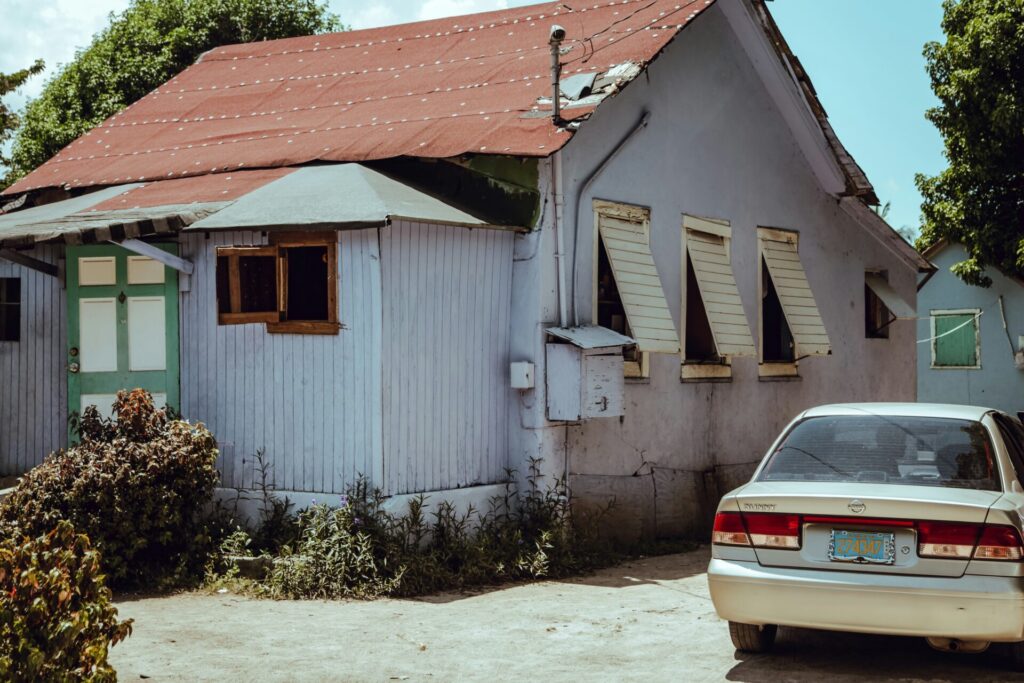When it comes to housing in the UK, there are various types of construction methods used. Ranging from standard to non-standard builds. Non-standard construction refers to homes built with materials or techniques different from traditional methods. This blog post – Buying a Home – What is Non-Standard Construction? – will delve into unique UK build types such as Wimpy No Fines, British Iron and Steel Foundation (BISF) houses, and Cornish builds. We will also explore the potential complications with mortgages and associated risks that come with these non-standard constructions.
Understanding Non-Standard Construction
Non-standard construction homes in the UK are those that do not use traditional brick and mortar techniques. These methods include the use of concrete, pre-fabricated sections, steel frames, timber frames, and other different construction materials.
Notably, such homes were often built during periods of material shortages or for experimental purposes. These buildings present a unique set of challenges when it comes to maintenance, repair, and especially securing mortgages.
Lenders may view these properties as higher risk due to concerns about durability, repair costs, and resale values. Consequently, buyers may find it harder to secure lending or may face higher interest rates.
It’s crucial for potential buyers to understand the specifics of non-standard construction types. This knowledge can aid in making informed decisions about property purchases. Consulting with estate agents, financial advisors, or specialists in non-standard construction in areas like Daventry or Rugby can provide valuable insights. Knowing the construction type can also guide homeowners on proper maintenance practices to preserve the property’s value.
The Rise of Wimpy No Fines Homes

The Wimpy No Fines homes, developed in the post-war era, are a notable example of non-standard construction in the UK. This building technique was introduced to address the housing shortage and material scarcity following World War II.
The method involves the use of concrete poured in situ without the traditional fine aggregates, resulting in a more porous structure. The name “No Fines” refers to this absence of fine particles in the concrete mix. These homes were primarily constructed by the Wimpey construction company, which is how they got their name.
This type of construction allowed for faster building times and reduced costs, making it an appealing option for mass housing projects during the recovery period. The unique properties of No Fines concrete, such as better insulation due to its porous nature, made these homes distinctive in the housing market.
However, their non-standard construction poses challenges for homeowners seeking mortgages, as lenders often perceive these properties as higher risk. Despite these financial hurdles, Wimpy No Fines homes have stood the test of time, with many still in use today, showcasing the durability and practicality of this construction method in the face of initial scepticism.
British Iron and Steel Foundation (BISF) Houses

Photo by Dakota Roos on Unsplash
British Iron and Steel Foundation (BISF) houses represent a significant chapter in the UK’s housing history, designed as a response to the post-war housing shortage and the need for cost-effective, rapidly built homes. BISF houses are characterised by their lightweight steel frame construction, which distinguishes them from traditional brick and mortar homes.
This method was developed in the late 1940s and early 1950s, leveraging the abundance of steel to create durable and quickly assembled dwellings. The steel frame is typically clad with metal or other types of panels, and these homes often feature distinctive design elements reflective of their era.
However, BISF houses are considered non-standard due to their steel frame construction. This can present challenges when it comes to securing a mortgage. Lenders may have reservations about the long-term durability of steel frames, particularly in relation to corrosion risks and the cost of repairs.
This perception can make it more difficult for owners and potential buyers of BISF properties to find competitive mortgage rates. As with other non-standard construction types, it is advisable for interested parties to seek advice from specialists and to engage with lenders who have experience in dealing with these unique properties.
Exploring Cornish Build Types

Photo by Wesley Tingey on Unsplash
Cornish build types are another example of non-standard construction in the UK. These were developed primarily in Cornwall during the post-war period as part of the effort to quickly provide homes for the growing population. Unique to Cornish builds is their use of precast concrete panels, which were manufactured off-site and then assembled to form the houses.
This method significantly sped up the construction process. Cornish units, as they are sometimes called, were part of the larger trend towards prefabrication in housing during this time.
However, like other non-standard construction homes, Cornish builds come with their own set of challenges, particularly when it comes to securing mortgages. The main concerns for lenders revolve around the durability of the precast concrete panels and the potential for costly repairs. Especially related to issues such as concrete degradation over time.
These factors can make it more difficult for buyers of Cornish build homes to access favourable mortgage rates. Potential buyers should seek specialised advice. Consider lenders that have experience with these and other types of non-standard construction homes to navigate the complexities involved.
Mortgage Challenges with Non-Standard Homes
Securing a mortgage for a non-standard construction home in the UK can be a complex process. Lenders often perceive these properties as higher risk compared to standard construction homes. This risk stems from concerns about the durability and maintenance costs associated with non-traditional building materials and methods.
As a result, potential buyers may face difficulties in obtaining financing. They might encounter higher interest rates or more stringent lending criteria. In some cases, lenders may even require additional assurances, such as a specialised survey report or an increased deposit, to mitigate perceived risks.
For those interested in purchasing a non-standard construction home, it is important to engage early with mortgage advisors who have experience in this area. They can offer guidance on which lenders are more open to financing such properties. Additionally, exploring options with smaller building societies or specialist lenders may provide alternative avenues for securing a mortgage.
Engaging with financial experts who understand the specific challenges of non-standard construction can help buyers navigate the mortgage process more effectively.
Assessing Risks Associated with Non-Standard Builds
When Buying a Home – What is Non-Standard Construction? Assessing risks for non-standard builds is essential for any potential homeowner. These properties often face unique challenges due to their construction methods and materials. Key risks include issues related to the long-term durability of the building materials.
For instance, some materials used in non-standard construction, like certain types of concrete or steel frames, may be more susceptible to wear and degradation over time compared to traditional brick and mortar. This can lead to increased maintenance and repair costs down the line.
Another risk is the potential for lower resale values. Properties that are considered non-standard can sometimes be less appealing to a broad market, impacting their future saleability and value. Insurance premiums may also be higher for non-standard homes. Insurers might view them as higher risk due to the reasons mentioned above.
It’s important for buyers to conduct thorough due diligence before purchasing a non-standard construction home. This might include obtaining a detailed survey that specifically assesses the condition and durability of non-standard construction elements. Being informed about these risks allows potential buyers to make more knowledgeable decisions and plan for any additional costs that may arise.
Future Outlook for Non-Standard Construction Homes
The future of non-standard construction homes in the UK presents a mixed picture. On one hand, there’s growing recognition of their historical and architectural value. Thus it could increase interest among certain buyers. On the other, challenges with mortgage accessibility and insurance costs remain.
However, advancements in construction technology and materials science may help mitigate these issues over time. As society moves towards more sustainable and eco-friendly building practices, the unique characteristics of non-standard homes, such as the thermal efficiency of Wimpy No Fines concrete, could see a resurgence in popularity.
Furthermore, specialised lenders and insurance companies are gradually becoming more familiar with these properties. Potentially easing financial constraints for buyers. Educational efforts by preservation groups and historical societies could also improve public perception. Highlighting the durability and charm of these unique homes.
In conclusion, while non-standard construction homes will likely continue to face certain challenges. Evolving attitudes and technologies promise to shape a more favourable future for these distinctive properties.
Buying a Home – What is Non-Standard Construction?
We hope you have enjoyed our blog – Buying a Home – What is Non-Standard Construction? Having had may years of experience selling all types of homes, David at Skilton & Hogg is best placed to help you sell.
Call us today on 01327 624275 or 01788 486100 for a free property valuation or click this link to send your details – Contact Us.




